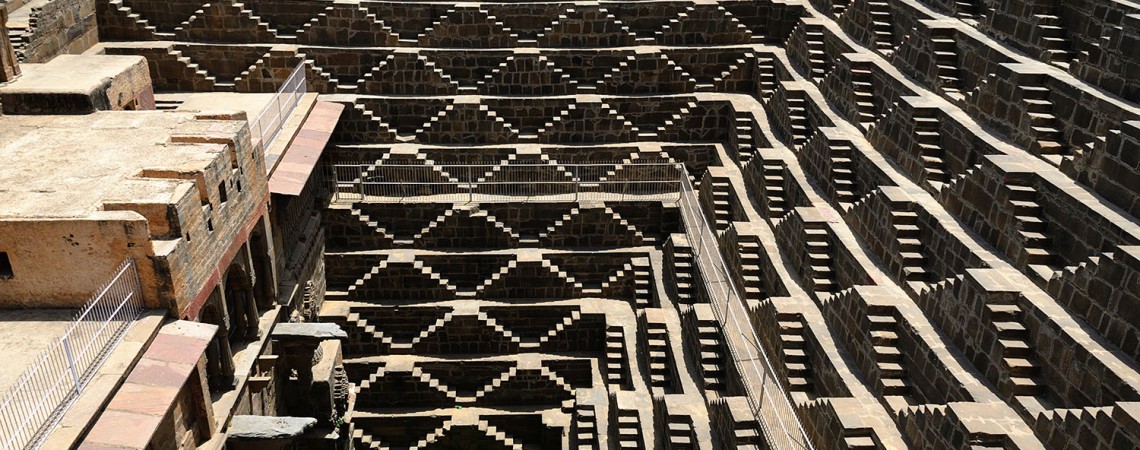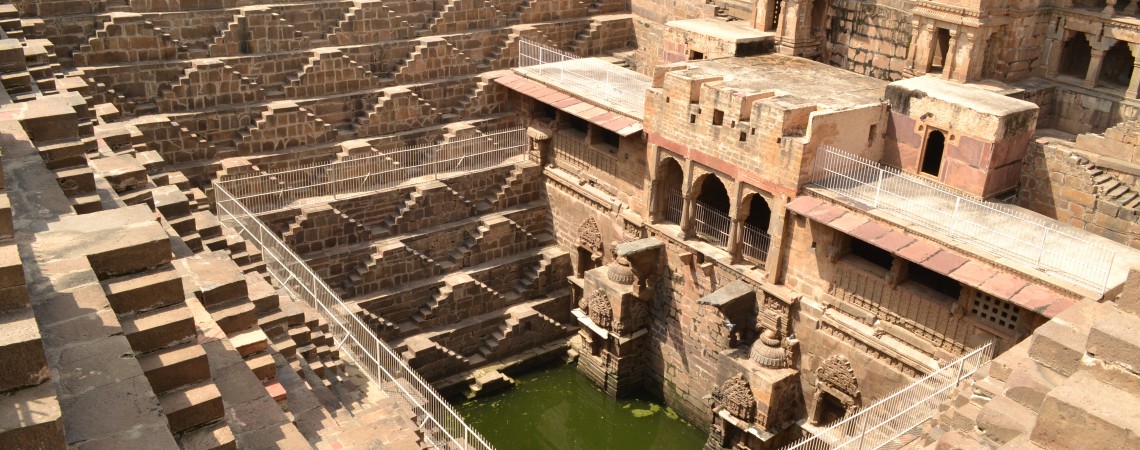


Chand Baori Abhaneri: A day trip to a stunning stepwell
The stepwell known as Chand Baori in Abhaneri (a village in Rajasthan) can be done as a comfortable day trip from Savista, being a 95 km drive each way on the Jaipur-Agra Highway. It is located in the neighbouring district of Dausa.
The dramatic architecture of the Chand Baori and its desolate location also make it a favourite for film shoots. For the information of movie buffs, the stepwell was the setting for the underground prison in Christopher Nolan’s epic film, “The Dark Knight Returns”, where Bruce Wayne must attempt a perilous climb to escape his confinement and return to save Gotham.
Once a vibrant kingdom, Abhaneri now lies in silence, patiently awaiting its rediscovery by history. The Harshatmata temple (dedicated to the Goddess of joy and happiness who spreads brightness all around) and the Chand Baori in Abhaneri are both believed to have been built in the 10th. century (early medieval period), the stepwell being both a rainwater harvesting measure and a place for pilgrims to wash their hands and feet before entering the temple. While daily worship is still offered at the temple which is in a state of partial ruin (many pieces from it now lodged in museums across the world) and there is a continuing centuries-old tradition of an annual three day fair dedicated to the goddess, the exquisitely beautiful gigantic stepwell that stands next to it is a magnet for those who appreciate historical monuments that go beyond forts and palaces.
Reputedly the deepest ancient stepwell in the world, the Chand Baori at Abhaneri is one of many ornamented stepwells that are characteristic of the semi-arid regions of Rajasthan and its neighbouring state Gujarat (bordering the Thar desert), where they historically served important ecological and social functions.The Abhaneri stepwell was uniquely designed to harvest rain water in a season of plentiful rains, preserve it through consecutive dry seasons, and enable people to access the water even as the level in the well kept dropping. Stepwells were thus designed to be several stories deep, each story connected to the next through vertical flights of steps all around the internal circumference and linked horizontally by pillared halls whose stone walls were beautified with a profusion of sculptures and friezes.
The Chand Baori – Abhaneri step-well was created to celebrate three objectives: to be a water-harvesting mechanism, to serve as an adjunct to the temple and, as an object of sheer visual beauty, to be a venue for the performing arts. Built in an era when water was literally worshipped as a life-giving resource, it is an example of how collections of water in the form of rivers, lakes, ponds – and in this case a water-harvesting reservoir – were exalted through architectural embellishment, sanctified through religious rituals, and celebrated as spaces for social interaction. It is an architectural marvel of carved and embellished inner walls that are 13 stories deep, and intricately connected through hundreds of flights of steps, leading all the way down to the lowest prevailing water level. Interspersed in and around this amazing structure are temples, figures of gods and goddesses, and performance platforms. The Chand Baori location is easily accessible from Savista and makes for a day well spent, exploring this mesmerizing stepwell.

